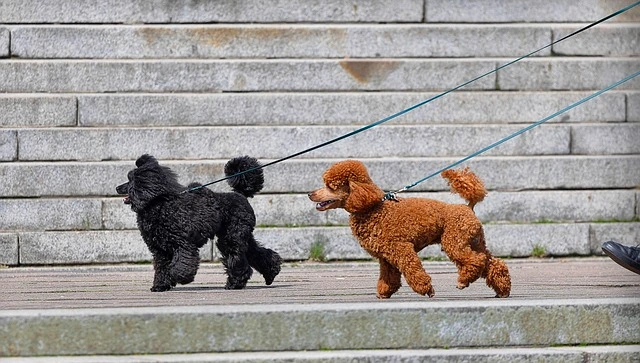Regular exercises are something essential for any dog to keep good mental and physical health. Hence, Injury Prevention and Dog Exercises should be carefully selected for two major reasons: 1- to suit your dog’s breed, size, and fitness level, 2- to minimize significantly the risk of injuries. The following are 10 well-selected dog workouts
1- Walking
Regular walking is a basic exercise for all dogs. It’s good to begin with short distance and progressively extend the walks when you notice your dog start gaining some endurance. Always wear a collar or harness to make sure you maintain control (and not fall in the Allow-Your-Dog-to-Lead-You).

2- Fetch
“Fetch provides excellent physical and mental activity for dogs. Always use smooth, soft toys and include tug-of-war for strengthening muscles. Play cautiously to protect your dog’s muscles. Teach your dog the release command to prevent injuries during play.”
3- Swimming
Swimming offers a low-impact exercise that places less pressure on the joints and muscles. It’s especially beneficial for dogs with arthritis or mobility issues. Stay close to your dog in the water to ensure it safely enters and exits.
4- Stairs
If your dog is predisposed to hip dysplasia or has problems in the joints, it is better to avoid making it climb stairs.
5- Agility training
Agility workouts push and strain your dog physically and mentally. Always, go progressively from easy barriers to more challenging ones in order to prevent strains.
6- Warm-up and Cool-down
Before starting workouts, we all walk or juggle at a leisurely pace as a kind of warm-up. That’s exactly what you should do to your dog before any strenuous exercise. Besides, to avoid any muscle stiffness, make your dog take a leisurely walk to cool down after training.
7- Play Time
Your dog’s paly-time should be monitored, especially when playing with other dogs. To keep accidental injuries away, it’s important that the dogs playing with yours are of similar play style as well as size
8- Managing Weight
Obesity can lead to strains on the dog’s joints. To prevent such problems, make sure your dog has a healthy weight.
9- Veterinary Examinations
Schedule routine checkups to ensure your dog is healthy enough for exercise. Always watch for signs of pain, tiredness, or lameness during and after training. If you notice any injury symptoms, contact your veterinarian immediately.
10- Suitable Footwear
The footwear should always be appropriate to the weather. For example, if it’s extremely cold, you have to wear your dog boots to shield it from scorching concrete.
In conclusion, regular exercise is vital for maintaining your dog’s mental and physical well-being. However, it’s important to carefully select activities that suit your dog’s individual needs while focusing on Injury Prevention and Dog Exercises. By choosing appropriate workouts, monitoring your dog’s playtime, managing its weight, and ensuring routine veterinary checkups, you can help your dog stay healthy, happy, and injury-free. Always prioritize your dog’s safety to make exercise both enjoyable and beneficial.”




